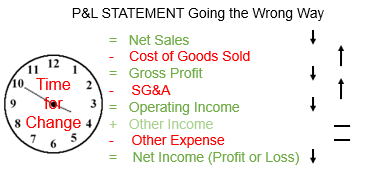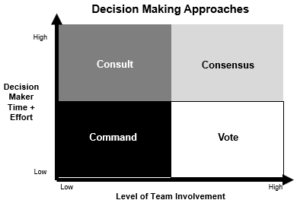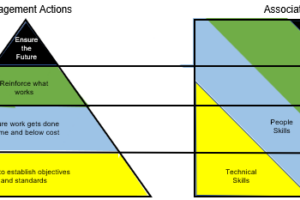
Synopsis
No matter what your sales growth curve, cash position, and profits are today, any change you need to make is only possible when employees take on new challenges, expand their capabilities, cultivate new behaviors and act on new ideas.
Change is inevitable. You don’t have to be a professor to appreciate that we are undergoing the most rapid period of change in human civilization. Each market we compete in is under constant evolution through knowledge and technological advancements. The evolution occurring is taking place with or without us.
Our ability to continue to do as we have always done and achieve the same results disappears as fast they change. The reality of failing to evolve as our environments evolve around us results in working harder to hold on to what we have as it slowly slips away from us.
The reality that this creates is that every business is constantly changing whether customers, ownership, management, and employees intend it to or not. The question is are you leading the change or letting it happen to you. A sign that a business is letting change happen to them is when the business is losing money. When this happens, leadership must get in front of the change happening to it, or it will die. As a business grows, it too must change, or it will stop growing.
No matter the directionality of your cash position, profits, and sales growth curve, any change you need to make is only possible when employees take on new challenges, expand their capabilities, cultivate new behaviors and capitalize on new ideas.
You don’t need an MBA, a degree in HR, years of management experience, or the wisdom of Solomon to successfully manage change. You do need to step up to lead the change by having a consistent approach you follow to gain and hold onto commitment so that the sought after performance and behaviors become the norm through the following five critical success factors:
- Lead the Change: Use your profit plan developed in B-CPR Step 2 to shape the desired results you want to achieve. Frame the changes that need to occur to realize the desired results by either the pain or the gain through your performance management and rewards processes. Use this process to gain acceptance for change or commitment to change. As the desired results occur, use the rewards process to reinforce how the new behaviors from those impacted by the change are getting them and producing the desired results.
- Plan the Change: Successful change is driven by your “action plan” that lists the steps to be taken to realize the desired change. You better ensure each action is completed by listing the 3-W’s: Who, What, and When for each action area. Experience has confirmed that any time one of the three W’s is missing, the planned task will not get done. Keep your issues and corrective action plans Complicated solutions take too much time and, as a result, often don’t work. “If it’s not easy, it’s not right.” Take the extra time to develop simple solutions.
- Manage the Change: Use the performance metrics established in your change plan to communicate how you know the change is taking effect. This is best done when you have a culture of measurement and follow-up as defined in B-CPR Step 3. The best way to manage your change plan is through your weekly management meetings that confirm the results being produced through your management scorecard.
- Obtain then Maintain Commitment: Since there isn’t one thing that inspires every person to act differently, you must use numerous engagement techniques to hold onto the commitment to execute your change plan. B-CPR Step 3 helps you use a disciplined measurement and follow-up process to obtain and maintain a commitment to executing the change plan.
- Manage Behaviors: Every successful change occurs through continuous management of your own and each change participant behavior for the behavior and ultimately performance change to take root. This is best done by making sure commitments are being honored, and that planned results are occurring, or behaviors will never change.
Continuously improving business profitability comes down to compliance and control. Use the above critical success factors to get the people performance you seek. If you find an employee isn’t making the necessary changes over time, termination is your final action. Click here to learn about a ready-to-implement progressive discipline process for dealing fairly with problem employees. While no profit is made from terminated employees, the objective of this process is to make a profit, not terminate employees. If they aren’t helping you make money, then they are costing you money.
Do you want to learn more?
Click the link below to learn about a ready-to-implement progressive discipline process for dealing fairly with problem employees. While no profit is made from terminated employees, the objective of this process is to make a profit, not terminate employees. If they aren’t helping you make money, then they are costing you money.
SEE THE TOOL

